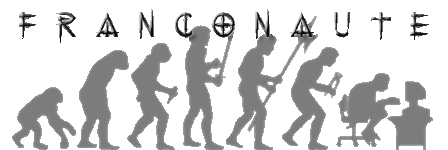
07/10/2009, 22h08
|
 |
Ronald Reagan du QG
|
|
Date d'inscription: août 2005
Localisation: Höchlstr.2 8000 München 80
Messages: 5 300
|
|
 For the Glory, Carnet n°6
For the Glory, Carnet n°6
Comme tout les mercredi:
Citation:
Hello everybody, and welcome to our sixth development diary for ‘For the Glory’ (FTG).
The database takes an important role in FTG. Let’s start with geography (continents, regions and areas), terrain, goods, cultures and provinces.
Geography
Areas, regions and continents are three geographically different concepts that are linked through the definition of the provinces.
Any combination is possible, especially for seas. An area can spread across several continents or regions and effects for provinces will be different according to the chosen combination.
Geography is also important for discoveries.
A continent:
Code:
continent = {
id = 2
tag = "America"
name = "CON_America"
culture_change = yes
whiteman_penalty = yes
popgrowth_island_colony = 0.00
popgrowth_continent_colony = 0.00
popgrowth_penalty = no
cot_assign_penalty = no
combat_overrun = no
badboy_penalty = yes
hre_election = no
available_mercenaries = no
vp_discover_first = { desc = "SPEC_AMERICA" province = any value = 50 }
vp_first_establishment = 5
}
A sea region:
Code:
region = {
tag = "CaribbeanSea"
name = "REG_CaribbeanSea" piracy = high
}
A land area:
Code:
area = {
id = 129 tag = "Panama"
name = "AREA_Panama"
type = land
vp_discover_first = { desc = "SPEC_PANAMA" province = all value = 5 }
}

Ledger showing Spanish provinces with cities sorted by region in 1617
Terrains
By default, FTG proposes seven different terrain types: plains, forest, mountain, desert, marsh, sea and river. There is no limit to possible terrain and various effects for warfare.
Terrain can evolve in a province with time.
Example:
Code:
mountain = {
type = land
color = DarkOrange
move_cost = 1.75
attrition_limit = 5
attacker_penalty = yes
cavalry_bonus = no
artillery_penalty = no
siege = 2
ai_attack_power = 2.00
ai_conquer_check = yes
}
Of course, AI takes terrains in account for movement, battle and siege decisions.
Trade goods
A province produces a dominant type of goods. Except for gold type, goods are under rules of supply and demand. Some province improvement (officials and manufactories) have influence and demand and goods can also have influence on each other.
Some goods such as grain increase land support limit, and some like naval supplies increase naval support limit.
Goods produced in a province can evolve with time and human activities.
Just like terrain, there is no limit to the possible number of goods in a game.
Example :
Code:
cloth = {
base_price = 10
min_demand = 0.50
max_demand = 1.50
barrack = 0.01
goods = 0.01
demand = { cotton = 0.01 } #Each cloth province increases demand for cotton
manufactory = { type = goods income = yes }
}

Information for cloth in 1419 for Burgundy in AGCEEP
Cultures
Culture is a concept that applies to cities, provinces and countries as three different levels.
For the main city of a province, culture defines the architectural style for the representation on the map and the city view.
For a province, culture represents a combination of various identification factors such as main spoken language but this is not the only factor.
A country has a primary culture and can accept several other cultures. A country owning provinces with non accepted cultures gets several penalties for income, manpower, possible revolt risk and research costs.

Ottoman Empire as a multicultural empire in 1520

Same area in the Cultures map mode
Here is the definition of Albanian culture in the database:
Code:
albanian = {
city = BYZ
buildings = MIN
color = Red
}
Conquering a province is not sufficient to see culture changes in this province. The culture of a province can change with time and the architectural style of the main city will match the primary culture of the owner with investments in fortresses or natural population growth at some levels that are also levels for manpower increase.
Provinces
A province is the base unit of the map. All other presented concepts are to be found in the definition of a province:
Code:
province = {
id = 3
name = "PROV_Sitka"
continent = "America"
region = "North America"
area = "Alaska"
type = coastal
sea_adjacency = 861
terrain = forest
size_modifier = 0.00
climate = arctic
religion = exotic
culture = aleutian
manpower = 1
income = 1
goods = fur
city_name = "CITY_Sitka"
cot_modifier = -3
colonization_difficulty = 7
natives = {
combat = 25
ferocity = 2
efficiency = 1
tp_negotiation = 4
tolerance = 8
}
gfx = {
city = { x = 2832 y = 453 }
army = { x = 2969 y = 406 }
port = { x = 2808 y = 488 }
manufactory = { x = 2873 y = 384 }
terrain1 = { x = 2857 y = 505 variant = 0 }
terrain2 = { x = 3015 y = 471 variant = 1 }
terrain3 = { x = 2876 y = 521 variant = 2 }
terrain4 = { x = 2902 y = 529 variant = 3 }
}
history = { }
}
It includes extra information like climate, income, manpower, presence of natives and coordinates for gfx.
We will see religions and technologies in a future diary.
|
__________________
Bon... J'ai peut-être fait quelques petites concessions...
|







